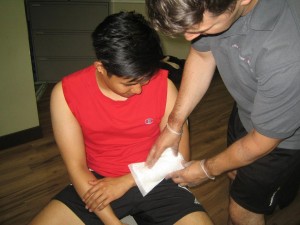Most cases of fractures do not lead to infections. Once infection occurs after the individual sustained a fracture, the treatment and recovery period can be extended and can be complicated.
Causes
An infection usually occurs in fractures since bacteria can enter the body during a traumatic event. Even though uncommon, bacteria can also enter the body during surgery in which the broken bones are being set in place.
- Open fractures occurs when the bone sticks out of the skin or a wound penetrates down to the broken bone. Once the skin is broken, bacteria can easily travel down to the broken bone and cause an infection.
- Surgery can increase the risk for infection but preventive antibiotics are given before the procedure to minimize the risk.
Generally, if the damage to the surrounding skin, muscles, veins and arteries are severe, the risk for infection is higher. Chronic diseases that lower the immune response can also put the individual at risk for developing infection after a fracture such as HIV, diabetes and rheumatoid arthritis.

What are the symptoms?
An infection after a fracture will cause redness, warmth, swelling and increased pain around the affected area. If the infection is situated close to a joint such as the shoulder or knee, the individual might find it hard to move the involved joint. Additionally, a pocket of pus might form and if it bursts, pus will drain along with fever, chills and night sweats.
Treatment
When it comes to an open fracture, it is considered as a surgical emergency. Antibiotics are administered right away in the emergency room. The following steps in controlling the risk for infection involves cleansing the wound and removal of contamination from the skin, soft tissues and bone. This procedure is called as debridement and irrigation which is performed in the operation room. Depending on the severity of the injury, it might require a number of surgeries.
Once infection is suspected after surgery, the doctor will treat it with antibiotics, but might require additional surgery to clean out the infection. During the surgery, the doctor will take a sample of the infected tissue to determine the type of bacteria causing the infection. Once the bacterium is identified, the right antibiotic will be used. In case of bone infection, it might be difficult to eliminate and requires long-term antibiotics as well as several surgeries. In severe cases, amputation might be considered in order to stop the infection from spreading.
Outcome
If the infection is treated successfully, the individual can recover without any serious issues. To learn to recognize and manage bone and muscle injuries and signs of infection, enroll in a first aid class today. An infection after a fracture might require several trips to the operating room, long-term use of antibiotics and extended course of healing.
